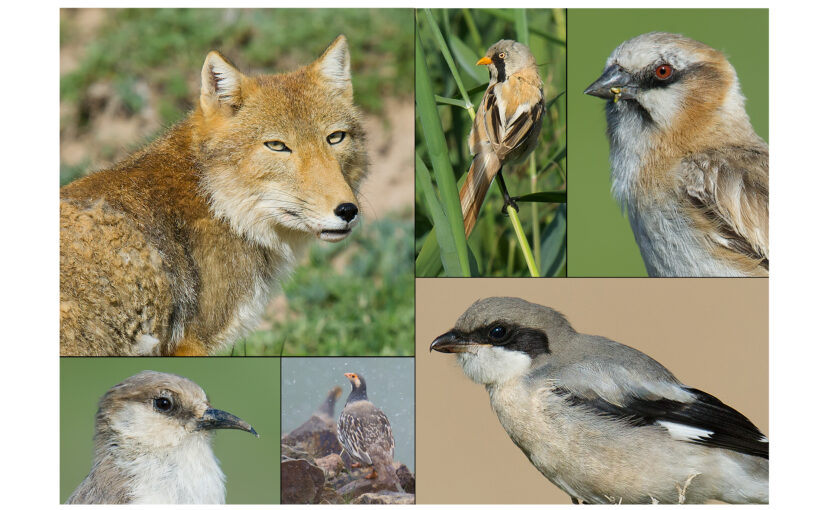by Steven Bonta
for shanghaibirding.com

This is an account of my first trip to Qinghai in August. Besides myself, two German friends and bird photographers from Shanghai, Andreas Goeckede and Kai Pflug, as well as a 16-year-old male student and aspiring wildlife photographer from my school, Hanxiao, went along. Andreas and Kai went to Qinghai three days before Hanxiao and I were able to leave and spent the time getting acquainted with the capital, Xining, and the nearby mountains and plateau country. Unfortunately, the delta variant of covid-19 chose that week to enter China in force, including Shanghai, so many unexpected logistical problems related to new pandemic control measures greatly complicated the trip. Still, it was an amazing experience, as we got to visit many remote areas of desert and mountain wilderness seldom seen by Westerners.
Day 1: Because of a surge in covid cases in several parts of China, our morning flight from Shanghai to Xining was canceled, and my reservation was transferred to an afternoon flight, essentially ruining what was to be a half day of birding around Xining. Additionally, the afternoon before my departure, the province of Qinghai suddenly announced that incoming travelers all needed to take a covid test, which left me scrambling to figure out what to do. Fortunately, Hanxiao was able to arrange last-minute tests at a crowded hospital. After the tests, we left immediately for the airport and arrived in plenty of time to go through the onerous security checks.
When we arrived in Xining close to dusk, we found the airport a nightmarish landscape of hazmat-suited baggage handlers and security personnel. Fortunately, scans of the negative results of both our covid tests reached our cell phones shortly after landing, so we were able to flash our tests. Being a foreigner, I was treated much more circumspectly, but in the end, the security personnel were so overwhelmed that they just waved everyone through. We were met by Phillip of Alpine Birding, one of the drivers/guides for our expedition, and whisked off to a hotel in the heart of Xining.
Qinghai is one of China’s largest and least populated provinces. It is larger than Texas but has a population of less than 6 million. It occupies the northern Tibetan Plateau, and many of its people are ethnically either Amdo Tibetan or (Oirat) Mongol (highway signs are mostly in both of those languages plus Chinese). It also has a very large Muslim population; most of the businesses around our hotel were operated by Muslims.
Day 2: Hanxiao and I left before dawn with Phillip to try to visit a few of the spots we had planned to see the previous afternoon. Kai and Andreas left in the other direction, since they had already been in Qinghai for three days; we would all meet up that evening.
Phillip took us first to Datong, a town northwest of Xining in the mountains bordering the east side of the Tibetan Plateau, where we went walking along a rocky river in search of Ibisbill, a highly distinctive wader found mostly on the Tibetan Plateau and in adjacent mountain ranges. It took us only a few minutes to locate several of these beautiful birds. It was, I thought, a very auspicious beginning.
We then drove into the forested mountains nearby so I could search for several lifers in a limited time frame. Hanxiao and I hiked up into a nice conifer forest to look for Crested Tit-warbler, Przevalski’s Nuthatch, Eurasian Treecreeper, and Gansu Leaf Warbler, and I was able to find all four species with little effort. Back at the parking area, a little dirt area, we had a quick breakfast and left.
We drove back past Xining and onto the Tibetan Plateau, passing through some heavy rain en route. We reached our first destination, Qinghai Lake, by late morning, and were happy to find the sun shining there. Qinghai Lake, also known by its Oirat Mongolian name Koko Nor, is the largest lake in China, a huge saltwater inland sea surrounded by semi-desert flats, grassland, and towering mountains. The southeastern corner, nearest to Xining, is very touristy, but we still managed to find many fine birds. The grasslands teemed with various lark species, including the oversized Tibetan Lark; Ground Tit, a large tan terrestrial chickadee with a curved bill; and White-rumped Snowfinch, Pere David’s Snowfinch, and Blanford’s Snowfinch. Of the water birds, the most conspicuous was the wonderful Bar-headed Goose, another Tibetan breeding endemic known for flying higher than almost any other bird species. Numbers of these birds ranged about in grassy wetlands, along with smaller numbers of Greylag Goose. Striking Pallas’s Gull, a huge black-headed species, were ubiquitous along the lakeshore, as were the dark Asian race of Common Tern.
We began driving west along the south shore of the lake, past mile after mile of scenic vistas where couples could pose for pictures for a fee or ride horses and yaks. We were particularly looking for Black-necked Crane, the crane species endemic to the Tibetan Plateau, but for the first 20 miles or so saw nothing but tourist traps. Eventually, though, we spotted a pair of cranes in a field several hundred feet from the road. We found the birds quite approachable, and Hanxiao managed to take some wonderful photos while I tallied migrating shorebirds (mostly Pacific Golden Plover and Common Redshank).
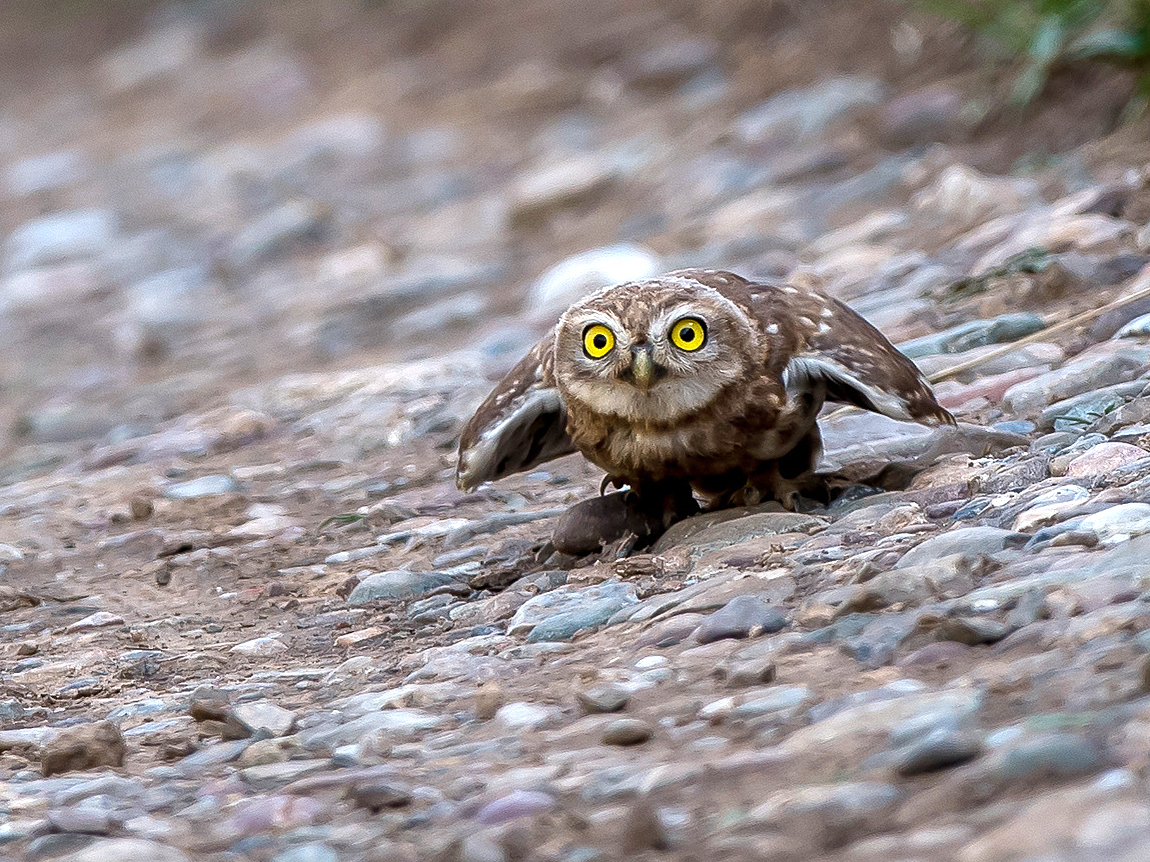
Finally, at Heimahe (“Black Horse River”), we turned south and headed into the Rubber Mountains, another famous birding spot, where we met up with Kai and Andreas and their two guides. The weather was cold and overcast, but while hiking in the wilderness pass we still managed to see some nice birds, including Himalayan Vulture, a Little Owl, and a beautiful male Streaked Rosefinch. White-rumped Snowfinch and Rufous-necked Snowfinch were abundant in the lower elevations, but unfortunately, the high pass, where other snowfinch species can be seen, was shrouded in heavy mist. My only lifer from that area was the drab little Brown Accentor.
We drove over Rubber Mountain pass as the afternoon waned and down into a desert valley reminiscent of northern Arizona as the sun set. Our destination was Chaka Lake, a salt lake in the middle of a very arid desert valley. The lake is something of a tourist attraction, and so a small town, complete with a Las Vegas-esque strip of hotels and tourist shops, has sprung up nearby. We checked in to our hotel and, after the usual dinner of Sichuan fare (Qinghai itself having a rather limited cuisine), we went to bed.
Day 3: We left the hotel very early in search of our two desert target species, Pallas’s Sandgrouse and Mongolian or Henderson’s Ground Jay, neither of which would be easy to find. We parked in a scrubby area a couple of miles from the lakeshore proper and began combing through the grassland—which was full of water upwellings and a surprising number of green patches. We found a number of beautiful Ruddy Shelduck and a few shorebirds hiding in the various muddy oases in this otherwise arid area. Also present were Isabelline Wheatear. Finally, a pair of Pallas’s Sandgrouse flew right over my head, giving me a superb but fleeting view. Despite lots of searching at that spot, we found no Henderson’s Ground Jay.
After lunch, we tried again, driving to a very remote area used only by nomad herders, to the west of Chaka Lake. After a very long search, we finally located a couple of ground jays, attractive tan and blue birds that, as their name implies, live mostly on the ground or in small desert shrubs. Here, the shrubs were only a few inches high, so the ground jays spent much of their time running around on the reddish hardpan like plovers.
The landscape in this area closely resembled the drier portions of America’s Great Basin, and the flora and fauna were also reminiscent: jackrabbit-like Woolly Hare were abundant, and the plant life consisted of small, sturdy bushes that resembled sagebrush and clumps of wiry grass.
Later in the afternoon we explored an oasis around a small village, which turned up both Isabelline Shrike and Isabelline Wheatear, as well as a nice range of shorebirds—mostly Common Redshank, but also Temminck’s Stint, Common Greenshank, Green Sandpiper, Tibetan Sand Plover, and a few Kentish Plover—at the village reservoir.
Day 4: After another night at Chaka Lake, we left early in the morning and drove west out of the valley into some fairly high mountains, where we went searching for wildlife in a remote valley just after dawn. It was bitterly cold and few birds were out, although the surrounding terrain pulsated with hares, pikas, and marmots, as usual. Back at the main road, we spotted a large and very brightly-colored rosefinch in the parking lot of a truck stop, which turned out to be a Great Rosefinch.
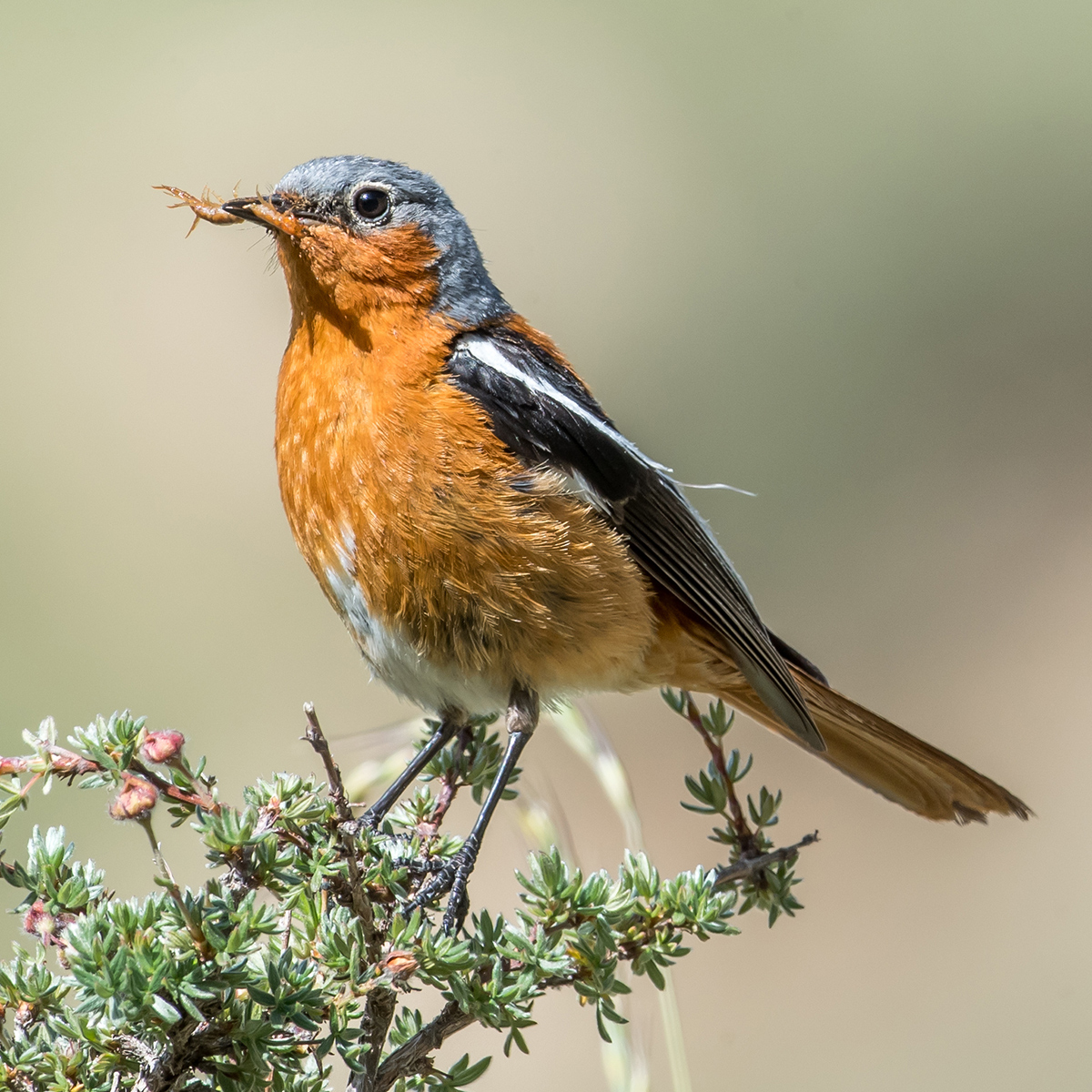
Continuing onward, we began exploring a series of valleys accessible via terrible, slightly hazardous roads leading off from the main highway into a chain of dry mountains that paralleled the road on the north. Our major objective was the rare and extremely local Ala Shan or Przevalski’s Redstart, which we finally found in the third spot. This valley had a nice stream, lush streamside vegetation, and even stands of some kind of cedar or juniper, which happened to be fruiting and were attracting large numbers of birds. Colorful Przevalski’s Redstart were everywhere, along with several other Tibetan Plateau endemics, including White-browed Tit-warbler, White-browed Tit (not a typo; they are two species), and White-backed or Kessler’s Thrush. I also found a colorful flock of yellow and black White-winged Grosbeak.
Continuing west, the landscape became drier and drier, until we reached the substantial oasis around the small city of Dulan. We even passed a herd of Bactrian Camel at one point. We continued past Dulan to a truly remote small town at the edge of the Kunlun Mountains, where we would stay one last night in a hotel before proceeding into the wilderness of the Dulan Natural Area, a stretch of mountains larger than Taiwan.
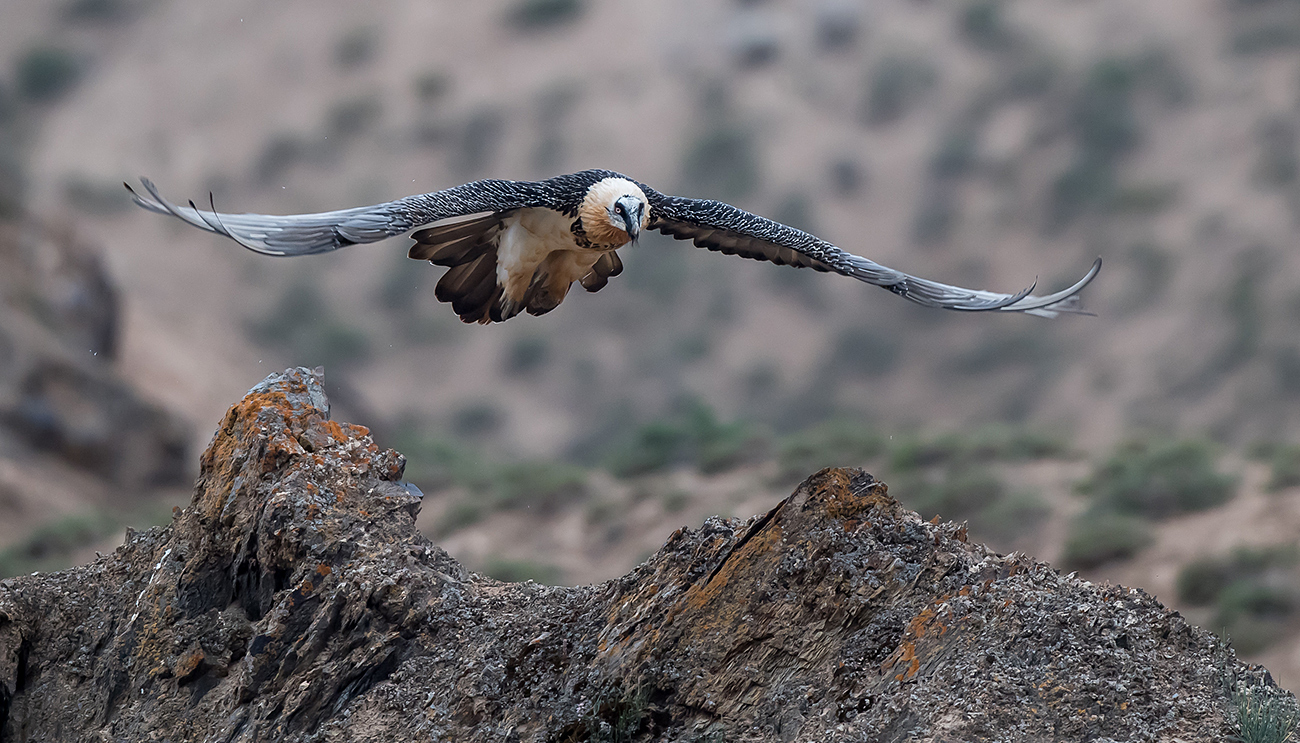
Day 5: We departed the next morning early for the wilderness area in the heart of the Kunlun Mountains, following the Xiangride River into the mountains. Before long I spotted our first herd of Blue Sheep (also called Bharal), an abundant animal in the Kunluns, browsing at the base of a rocky ridge near the river. We stopped the cars to watch and take pictures, since the animals were very close. I noticed a huge black bird sitting up the slope from the sheep, no more than 100 meters away. It looked to be a very large, dark vulture. It turned out to be a juvenile Lammergeier or Bearded Vulture, and as we looked on, one of its parents sailed up and landed atop a large rock less than 100 m from us. Cameras whirred as the magnificent bird turned this way and that, apparently unafraid of us. A third Bearded Vulture, presumably the other parent, occasionally circled in without landing. This incredible scene lasted for more than 20 minutes, with the adult Bearded Vulture posing regally and hopping about by turns, while a few yards away the boisterous fledgling clamored loudly for food. Right below them the Blue Sheep continued to graze unconcerned. Needless to say, we were all ecstatic at the superb views of this typically rare and unapproachable creature, but, as we were to learn, Bearded Vulture are quite abundant in the Kunluns and not at all shy.
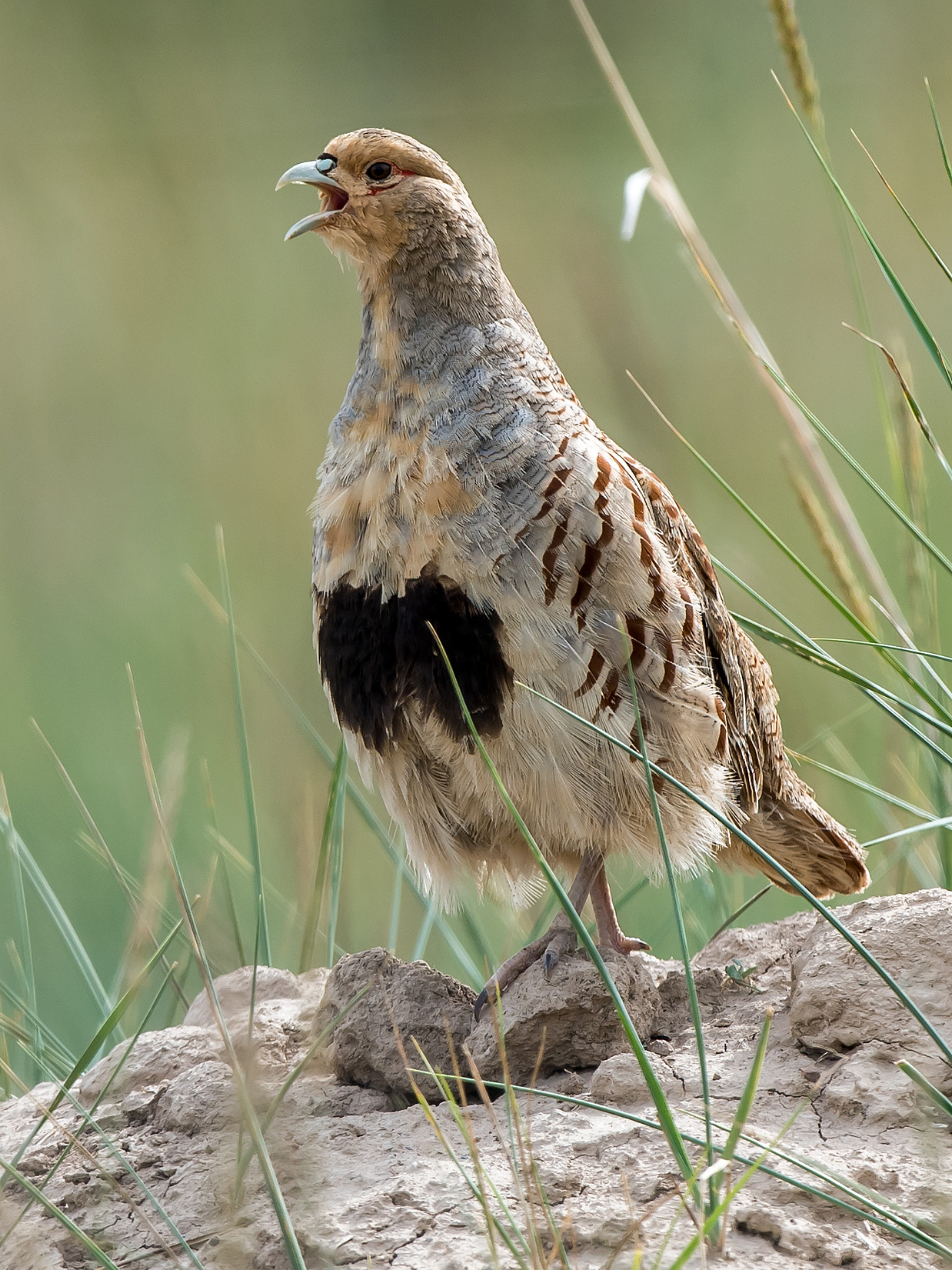
We drove on into the very heart of the Kunluns, eventually leaving the highway to follow a gravel and dirt road used by Amdo herders up into a wilderness valley. The first stage of the road passed through landscape that resembled the scenery of northern Arizona or New Mexico, with arid mountains and cliffs studded with sparse clumps of hardy vegetation. Here the wildlife was scarce, except for the ubiquitous Woolly Hare. But after about 10 km (6 mi.), the landscape abruptly changed into tundra-like valleys and high mountains that resembled the north slope of Alaska’s Brooks Range. Now the birds and other wildlife proliferated, with snowfinches and Ground Tit everywhere amid endless pika and marmot colonies. Here too we spotted a Kiang or Tibetan Wild Ass grazing in one meadow, a very striking tan and white animal that Hanxiao was able to approach quite closely and photograph. I spotted the first of many Tibetan Fox of the trip, a strange looking animal with unusually short legs and large, broad head. It was peering at us over a pile of rock, and trotted off into the vast grassland, casting frequent backwards glances. We also found a nice family of Daurian Partridge and many family groups of Chukar-like Przewalski’s Partridge. Aside from a few Amdo nomads, we encountered no other people at all. After 30 km (19 mi.), the last fences disappeared and we were truly alone, surrounded by grassland and very high mountain ridges that probably topped out around 16,000 ft. (4900 m). At one point we came across a graceful pair of Tibetan Gazelle grazing on the roadside. It was strange to see such animals, more associated with tropical savanna, grazing far above the treeline in what is surely a bitterly cold and unforgiving environment most of the year.
We eventually retraced our steps to the highway and drove a bit further before turning off again onto another scantily-maintained mountain track, which we followed about four miles up into the high country to a tiny cluster of buildings that served as the ranger station for the Dulan Nature Reserve. Here, at 4200 m (13,650 ft.), we were to spend our next three nights, with electricity but without running water, internet, or cell phone. The ranger who maintained the station, a very pleasant Tibetan and acquaintance of George Schaller, who has brought several groups of student researchers to this remote spot, was very friendly and helpful. Since we arrived in the late afternoon, there was still time to hike in the meadows and mountains around the station before dinner. I showed Hanxiao a pair of Golden Eagle, another Bearded Vulture, and several Himalayan Vulture, although hiking at nearly 14,000 ft. in elevation was quite a challenge!
After dark, we had a sumptuous dinner courtesy of Phillip’s cooking skills, and retired to better-than-expected accommodations in the metal huts. There was no heating, but there were plenty of heavy blankets in addition to my sleeping bag, and cots that were not uncomfortable.
Day 6: We awoke to cold rain mixed with snow, which had coated the surrounding peaks white. I remarked that, owing to the unpleasant weather and low visibility, this day had a hard act to follow to top the previous day. As it turned out, my pessimism was unwarranted. We caravanned over to yet another wilderness valley, where we followed another sketchy road from the desert-like lower elevations near the river up into the tundra and grand panorama of the high peaks and ridges—or rather, what would have been a grand panorama without the steady rain that turned to heavy snow as we climbed higher. We stopped at one spot across from towering cliffs known for Snow Leopard sightings, and were rewarded with a spectacular close flyby of two more Bearded Vulture, another adult with a juvenile in hot pursuit—but no Snow Leopard or other cat species. Hanxiao and Andreas opted to stay in a small metal hut and wait for animals to show up, while I drove up into the higher country with Phillip, over 15,000 ft. (4570 m), amid heavy wet snow. We found animals and birds to be unaffected by the weather, noting a bedraggled Tibetan Fox, a pair of Saker Falcon, and the usual endless flocks of snowfinches, redstarts, and Ground Tit amid pikas and marmots so abundant that we had to drive very carefully to avoid running over them. I remarked that so much prey would seem to require lots of predators, and very shortly thereafter, we rounded a corner to see a large wolf standing in the middle of the road, barely 30 m away. Not at all shy, the animal looked us over before slowly ambling off into the immense grassland stretching away to the crest of the range. Later in the morning we all observed a second wolf hunting on the rugged slope where we had been looking for Snow Leopard, and Kai and his guide observed a third animal (distinguished by a limp) elsewhere, from which we concluded that both wolves and foxes were abundant in the area. Wild cats—Snow Leopard, Pallas’s Cat, and Tibetan Lynx—continued to elude us, however. By early afternoon the weather broke, and we were able to drive back up to the high pass, where we saw more Bearded Vulture and Himalayan Griffon, as well as another Tibetan Fox and many large herds of Blue Sheep. The smaller birdlife included large numbers of Pale Martin and yet another striking redstart species, Güldenstädt’s Redstart, which seemed to prefer meadows with abundant yak dung near the yurts of the few nomad families staying in the valley. We eventually balked at crossing a particularly hazardous-looking stream crossing, beyond which the road climbed enticingly into higher and even more remote country, and drove back down the valley to the river, where we found some nice birds amid the tamarisk bushes, including Giant Grey Shrike and Streaked Rosefinch. We also had a nice long look at an Alpine Weasel scampering to and fro amid the bushes and grass clumps on a dry bank. The little beast was well aware of us but, like most of the other creatures in the Kunluns, was quite tame.
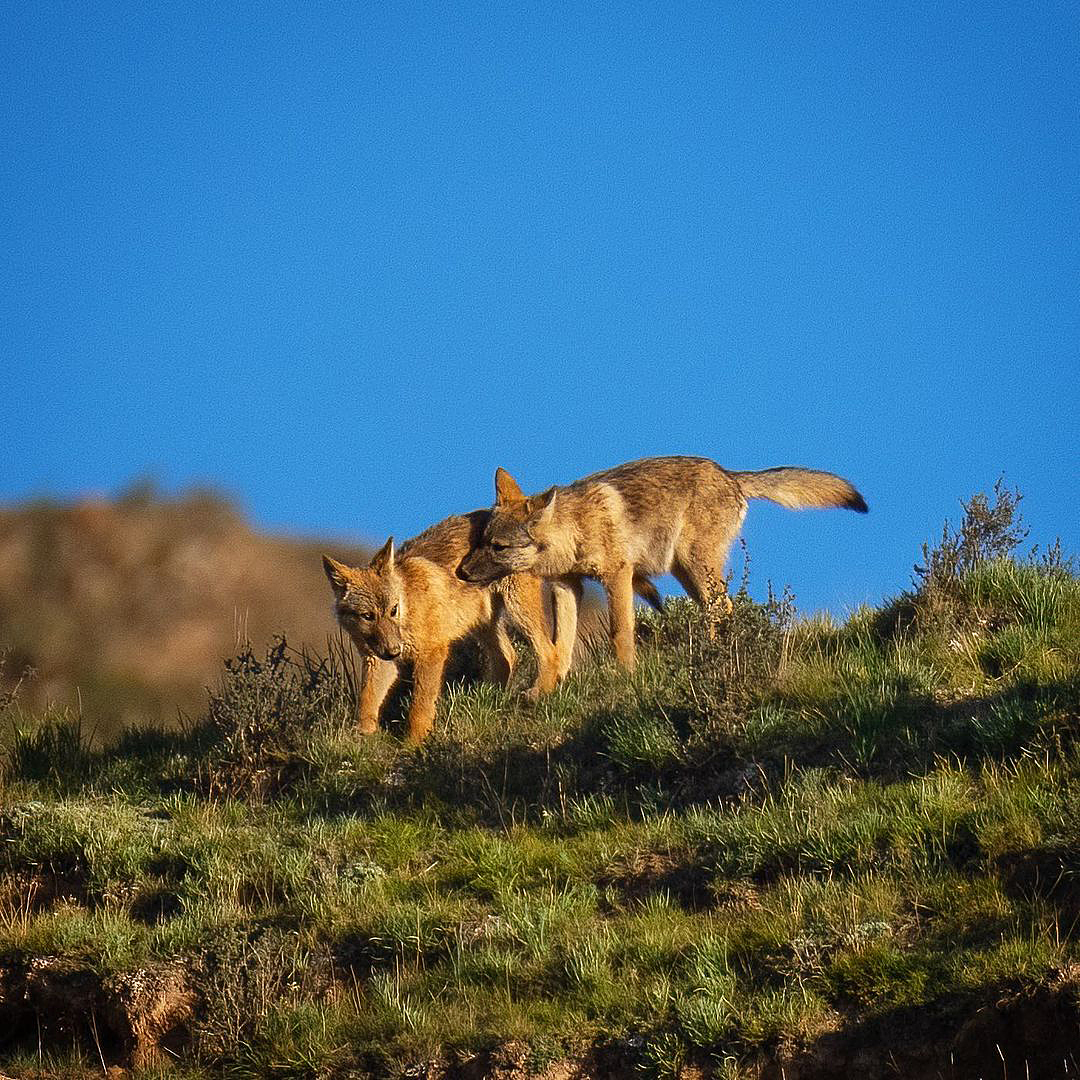
Despite the wonders we had seen, the day saved the best for last. As we headed back up the road to the ranger station in the late afternoon sun, we saw our second Little Owl of the trip, and shortly afterwards, ran into the friendly ranger, who offered to show us some wolf pups he had spotted playing on a nearby hillside. Sure enough, about 200 m away, we saw two nearly grown, dog-sized wolf pups chasing each other around. We had superb views through the spotting scope, and were even more amazed when two more pups appeared, and the four spent the next half hour or so tumbling around, chasing each other back and forth and wrestling in full view. At the same time, several more Bearded Vulture and Himalayan Vulture cruised overhead, while pikas, hares, and marmots scampered about all around us—a memorable scene.
That night was bitterly cold and crystal clear, and Hanxiao went outside to take pictures of a spectacular night sky, even more vivid than the skies of Arizona, where I used to live. We were, after all, more than 200 miles (320 km) from the nearest city, and at least 40 miles (65 km) from even the nearest town, as well as nearly 14,000 ft. (4270 m) above sea level, so the blackness of the night sky was pristine.
Day 7: We arose to clear skies and heavy frost. We drove to yet another remote valley, but besides large flocks of Blue Sheep, no other wildlife was in evidence. Phillip drove Hanxiao and me back to the valley we had driven up the previous day, and once again we saw Tibetan Fox and a single wolf, but still no cats. We drove up to the perilous stream crossing high above the last nomad encampment, and decided to try it, to see what lay in the highest passes of the Kunluns. We tossed a number of rocks into the rushing stream to make the crossing a little less risky, and then Phillip crashed and bashed his way over the rocks, through the current, and up onto the crumbling concrete apron on the far side to complete the crossing. A few hundred meters above the stream, the road forked, and we took the left fork, which wound around a high peak and into a spectacular alpine valley over 5000 m (16,250 ft.), surrounded by ridges that exceeded 17,000 ft. (5180 m). The valley was a huge grassland near the very limit of where vegetation could grow, and it was obviously seldom visited even by the intrepid herdsmen. The calls of Tibetan Snowcock rang from the surrounding ridges, and we scanned the valley and scree slopes above us. We soon found a pair of Tibetan Wild Ass grazing in the company of more than 30 Tibetan Gazelle, while a Bearded Vulture cruised along a ridge far above where even the hardiest plants could grow. I wondered what could induce them to soar to such heights, recalling that they have been seen flying well over 20,000 ft. (6100 m) on the slopes of Mount Everest.
Hanxiao and I explored the alpine meadow, which had been rendered very uneven by frost heave. Amongst the many grass-covered humps were a number of tiny alpine pools, and I pointed out to Hanxiao some of the hardy life forms that lived there: a type of caddisfly, a spider that could run across the surface of the water, and a tiny black hydrophilid beetle—all of these probably still unknown to science and unnamed.
We finally left this wild spot and wound our way back down the pass, finding the dangerous stream crossing a little less harrowing on the way down. We met up with the other members of our party and had lunch beside a high meadow in the company of snowfinches, before driving down the valley for the last time. I was thoroughly exhausted, so I had Phillip take me back to the ranger station so I could get a nap. The other group stayed out longer, but saw nothing new. The Kunluns had been very generous with us, but Snow Leopard and other cats would have to await another visit.
Day 8: We arose early and retraced our route out of the Kunluns and back into the high desert country to look for Goitered Gazelle, another antelope species endemic to the Tibetan Plateau. We found a number of them in a desert area around a series of springs that had attracted, among other things, a small flock of Black-necked Crane and a number of Ruddy Shelduck. The gazelles were quite wary, and the only one we got close to had a pronounced limp. Eventually, we drove on, back past Chaka Lake and up into the Rubber Mountains (a lower eastward extension of the Kunluns, by some reckonings).
Driving out of the mountains, we again reached the shore of Qinghai Lake by late afternoon, and proceeded west, stopping at an area at the lake’s southwestern corner, where we found huge rafts of ducks, including both Common Pochard and Red-crested Pochard, and huge flocks of Pallas’s Gull and Brown-headed Gull. We ate a truly excellent supper in a nearby town before proceeding up the west side of the lake to a hotel near the northwestern corner.
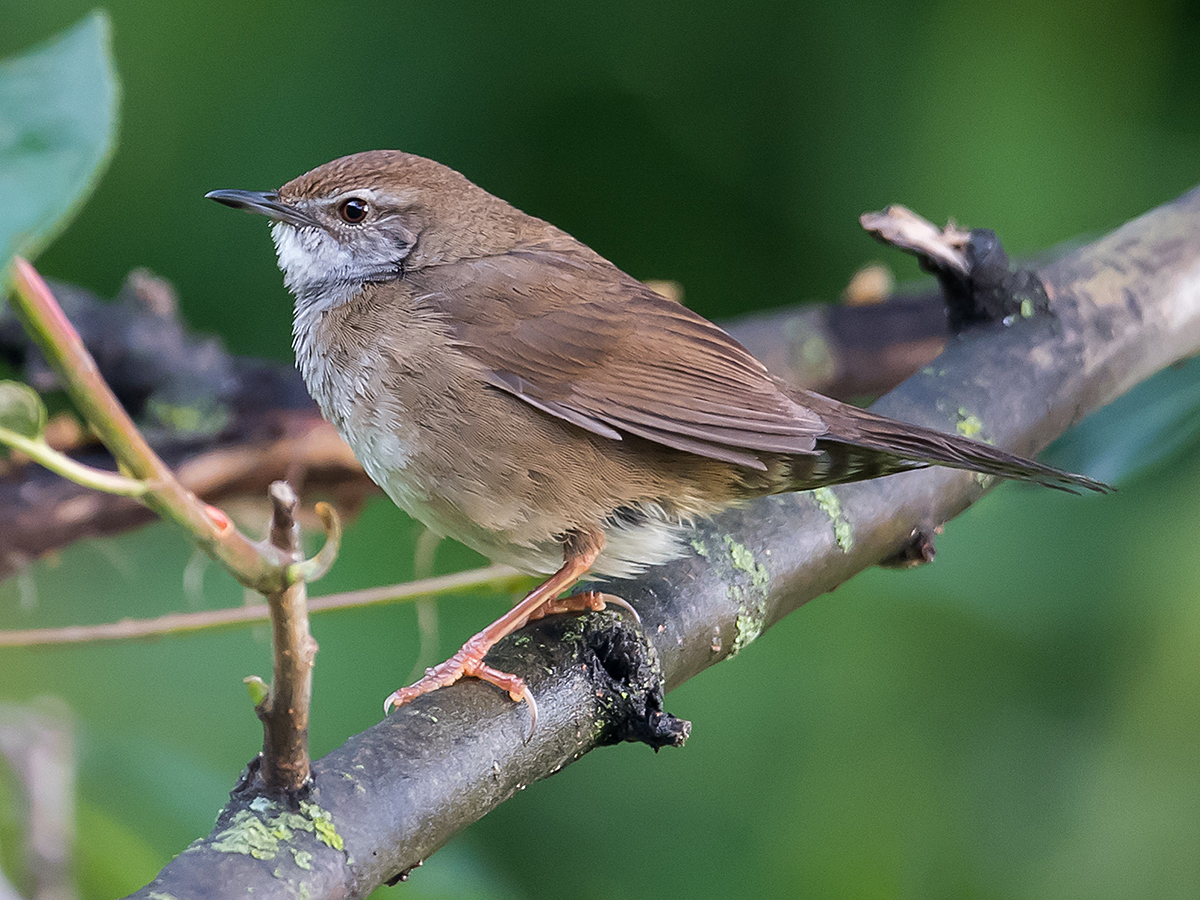
Day 9: We went searching for a third gazelle species, Przewalski’s Gazelle, in a desolate scrubland near the lake’s northwest shore, and with little difficulty found them—but not much else. At that point, we had to part ways, with Hanxiao and two of the guides driving directly back to Xining for his early afternoon flight back to Shanghai, while the third guide took Kai, Andreas, and me back to the mountains beyond Xining to do some more hiking and birding in the pine forests there before returning to Xining for our late night return flight. My two target species, Willow Tit and Spotted Bush Warbler, were easy to find. We spent the afternoon in the company of Willow Tit and Rufous-vented Tit plus lots of leaf warblers, laughingthrushes, rosefinches, and both species of tit-warbler, a pleasant end to our trip.
The Xining Airport that evening was practically deserted, as everyone was afraid to travel, yet again. But we managed to board our plane without incident and fly safely back to Shanghai, where we touched down at Pudong at a little past 1 a.m. I only added 26 “lifers” to my bird list this time, but we saw so much spectacular wilderness scenery and incredible views of wildlife that we all came away very satisfied.
eBird lists:
https://ebird.org/checklist/S92940055
https://ebird.org/checklist/S92940586
https://ebird.org/checklist/S92941046
https://ebird.org/checklist/S92942025
https://ebird.org/checklist/S92989993
https://ebird.org/checklist/S93033463
https://ebird.org/checklist/S93032901
https://ebird.org/checklist/S93033277
https://ebird.org/checklist/S93305237
https://ebird.org/checklist/S93305429
https://ebird.org/checklist/S93305545
https://ebird.org/checklist/S93305667
https://ebird.org/checklist/S93305825
https://ebird.org/checklist/S93305918
https://ebird.org/checklist/S93306111
https://ebird.org/checklist/S93306222
https://ebird.org/checklist/S93306578
MORE COVERAGE OF QINGHAI
shanghaibirding.com offers unparalleled coverage of birding in Qinghai. Below is an index to our top posts. Reach us at info@shanghaibirding.com.
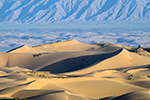
Summer-long Birding Expedition to Qinghai (Introduction): We birded Qinghai from June to August, spending the entire summer in the province. We noted classic Tibetan Plateau birds White Eared Pheasant, Black-necked Crane, White-browed Tit, and Przevalski’s Redstart. We explored little-birded northern Qinghai, discovering new locations for Przevalski’s Partridge, Tibetan Sandgrouse, and Gansu Leaf Warbler.
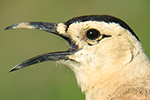
Birding Eastern Qinghai, from the Border with Gansu to the Border with Tibet: We spent the first two weeks of the expedition covering eastern Qinghai, from the Gansu border in northeast Qinghai to Ga’er Monastery on the border with Tibet. We had Henderson’s Ground Jay west of Chaka, Ibisbill on tributaries of the Mekong River, White-browed Tit in scrub along the G109, and Güldenstädt’s Redstart breeding near Qinghai Lake.
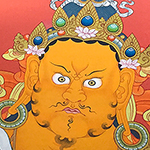
Birding Qinghai’s Eastern Yushu Prefecture: We found Tibetan Lynx in the Kanda Mountains, discovered new birding sites, and at an art school in the wilderness immersed ourselves in Tibetan Buddhist culture. Among our highlights were Grandala and Red-fronted Rosefinch, the highest-breeding bird in the Palearctic. Our mammals included White-lipped Deer and Mongolian Five-toed Jerboa, and we saw evidence of attacks by Brown Bear.
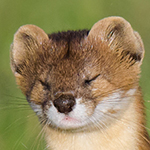
Birding the Qilian Mountains of Northern Qinghai: Our most important discovery was the poplar forests along the Heihe and Babao rivers, where we encountered woodland species Gansu Leaf Warbler and Chinese Thrush. Conifer forests yielded Black Woodpecker, and the scrub and pastureland gave us Eurasian Eagle-Owl, Siberian Roe Deer, and Mountain Weasel.
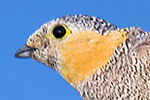
Forbidding (and Forbidden) Hala Lake: Defying a ban on foreigners, we birded the wild, remote inland sea in north-central Qinghai, elev. 4077 m (13,376 ft.). The lake yielded several interesting Qinghai records, among them Little Stint, Curlew Sandpiper, and Eurasian Whimbrel. Near shore, in perfect semi-desert habitat, we discovered flocks of Tibetan Sandgrouse.
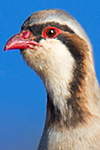
Birding the Remote Backcountry of Wulan County, Qinghai: Amid stunning scenery, we found Tibetan Wolf, discovered a new location for Przevalski’s Partridge, and around Lake Xiligou had Qinghai favorites Black-necked Crane and Tibetan Lark. The lake held a noisy super-flock of 4,600 Ruddy Shelduck, and Mongolian Goitered Gazelle were in the hills behind. Near Chaka we had Mute Swan.
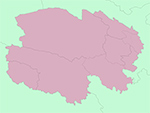
Index to Place Names in Qinghai: Study this list and plan your trip to Qinghai, the most exciting province for birding in China. We offer fascinating facts on famous places as well as sites little known, all with geographic coordinates. Read also our bibliography and use our index of eBird lists from the summer-long expedition.
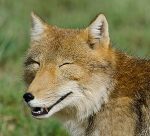
Mammals and Birds of the Tibetan Plateau: Our team drove 3977 km (2,471 mi.) in 15 days, starting and ending in Golmud, Qinghai. In mountains as high as 5100 m (16,730 ft.), we found 98 species of bird. Mammals were the big stars. I watched a Tibetan Fox catch and devour a vole, we found 46 Tibetan Antelope and a Tibetan Wolf in Antelope Valley, and we saw dozens of Tibetan Wild Ass.
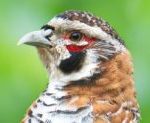
Tibetan Bunting Leads Parade of Tibetan Plateau Endemics in Qinghai: shanghaibirding.com founder Craig Brelsford led a three-person team on a 23-day trip to Qinghai. We covered most of the Tibetans (Tibetan Snowcock, Tibetan Partridge, Tibetan Babax, Tibetan Rosefinch, and Tibetan Bunting) and found Przevalski’s Finch near Qinghai Lake.
Qinghai in October: Jesper Hornskov and his team noted 178 species of bird in October, a time of year, Hornskov writes, “when few dedicated birdwatchers visit this unique land.”
In addition to coverage of Qinghai and our core area of Shanghai, shanghaibirding.com has extensive coverage of other areas of China, among them
Fujian
Northeast China
Sichuan
Xinjiang
Yunnan
Featured image: Birds and mammals of Qinghai noted by Steven Bonta during his expedition to the province. Clockwise from top L: Tibetan Fox, Bearded Reedling, Rufous-necked Snowfinch, Giant Grey Shrike, Tibetan Snowcock, Ground Tit. All photographed in Qinghai by shanghaibirding.com founder Craig Brelsford.
